#Fragaria virginiana
Explore tagged Tumblr posts
Text

Treefrog on strawberry
#landscape#landscape photography#nature#nature photography#naturecore#photography#garden#strawberry#fragaria#fragaria virginiana#frog#treefrog#dryophytes#may#spring#kentucky
26 notes
·
View notes
Text
My Garden Flowers Part 1
Just thought I'd give you all the garden tour. :) I will update when I get more photos. This is of course not counting any of my ferns or conifers as they don't flower. I might do a series of foliage posts, though. All photos mine, unedited.



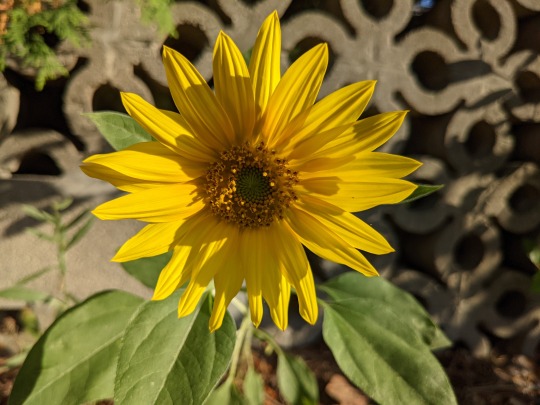






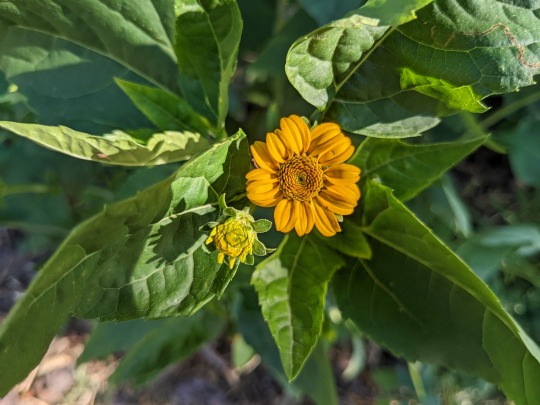

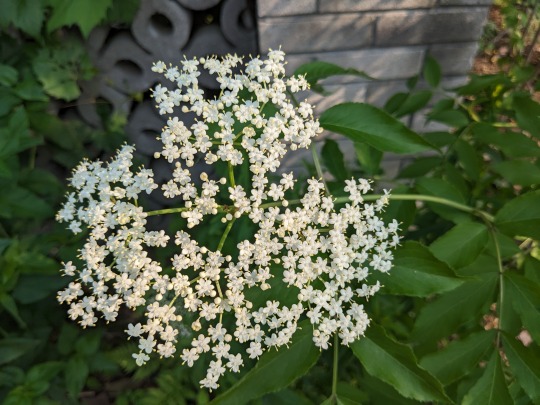

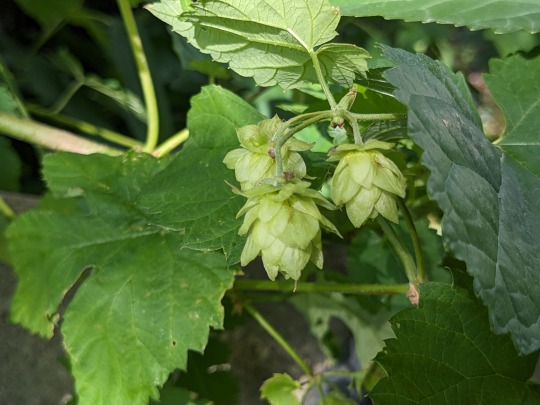


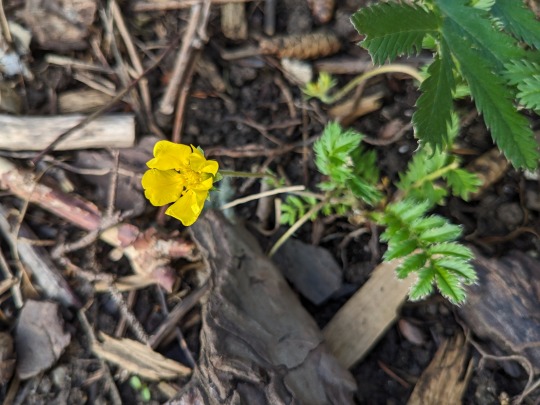
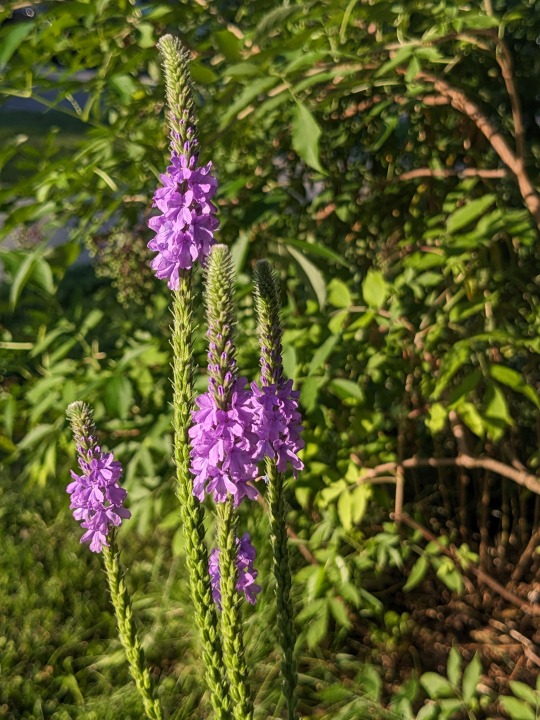
In order of appearance:
001. Canada Plum (Prunus nigra) Not pictured as she hasn't flowered yet. I have her in a shady spot and she's fairly slow-growing but healthy.
002. Yellow Monkeyflower (Mimulus guttata) An annual that sadly doesn't seem to have reseeded despite flowering profusely last year. But maybe next year! That happens sometimes.
003. Boreal Yarrow (Achillea millefolia borealis) The place where she is is north-facing so she doesn't get quite as much sun as she'd like, so she can get a bit leggy but she still flowers so it's fine.
004. Canada Goldenrod (Solidago canadensis) Not pictured as I haven't got any pictures yet, but I will if she flowers this year. I actually had to move her because she had planted herself in a not ideal location in my garden. Which is fine because I wanted one anyway.
005. Vierhapper's Aster (Aster alpinus vierhapperi) This was supposed to be Canada goldenrod, but it's okay because Canada goldenrod planted herself. I relocated her to the intended spot and they get along fine together. Asters and goldenrods generally do. :)
006. Common Sunflower (Helianthus annuus) I did not plant this! Must have been given to me by a bird or squirrel. Sadly she didn't reseed. Oh well, she's a cultivar and I did get the wild type. Interesting to me that she actually flowered in that area when her cousin stubbornly refuses to.
007. Obedient Plant (Physostegia virginiana) This refers to the fact you can move the flowers around, not to the behaviour of the plant, which is very aggressive.
008. Black Chokeberry (Aronia melanocarpa) Not pictured as she hasn't flowered yet.
009. Enchanter's Nightshade (Circaea lutetiana) I didn't plant her; she just started coming up everywhere when I removed the grass. She is not a nightshade. I've learned that even people interested in planting natives regard her as a weed. I disagree. She's not aggressive to other plants and she's pretty.
010. Northern Gooseberry (Ribes oxyacanthoides) Not pictured as she hasn't flowered yet.
011. New Jersey Tea (Ceanothus americanus) Haven't tried her for tea yet, but she's a lovely little bush.
012. Sunchokes (Helianthus tuberosa) Aforementioned cousin of the common sunflower. Not pictured as she keeps making her flowerbuds too late in fall so the frost gets them before they can open.
013. Potato Bean (Apios americana) Not pictured as she hasn't flowered yet.
014. Common Milkweed (Asclepias syriaca) SUPER fragrant, especially in the evening. This is an aggressive plant but worth it for the flowers, the fragrance, and the butterflies they attract. Not to mention the young shoots, flower clusters, young leaves, and young seedpods are all edible if cooked properly!
015. Northern Bayberry (Myrica pennsylvanica) Not pictured as she hasn't flowered yet. Her leaves are nice and evergreen, though.
016. Virginia Strawberry (Fragaria virginiana) Also known as "wild strawberry", but so is her cousin. She flowers reliably every spring but no strawberries yet. The flowers themselves are edible but I keep hoping she'll make strawberries. lol
017. Nannyberry (Viburnum lentago) Not pictured as she hasn't flowered yet.
018. Riverbank Grape (Vitis riparia) Not the greatest picture, but the point is I will get grapes one of these years!
019. False Sunflower (Heliopsis helianthoides) It was hard to pick a favourite photo. They're really quite stunning. She blooms from July until the frosts of October. :)
020. Canadian Serviceberry (Amelanchier canadensis) Not pictured as she hasn't flowered yet. She's a wee little tree in the shade for now.
021. New England Aster (Symphyotrichum novae-angliae) Probably the most attractive of the Symphyotrichum asters, to be honest. The flowers are more compact than most of her relatives while still being a decent size, and the colour is much more saturated too. And the bees absolutely love her. But that doesn't stop me enjoying other asters!
022. Common Elder (Sambucus canadensis) She almost died when I potted her for the move. See I dug up as much of her taproot as I could, but she'd already gone quite deep and I had to break it. But she lived! She's quite big now and has these wonderful lacy white elderflowers every year, with elderberries to follow.
023. Coralberry (Symphoricarpos orbiculata) Not pictured as I didn't get any pictures yet. Should have when I first got her. She was in flower then. She hasn't since.
024. Black Raspberry (Rubus occidentalis) Not pictured as I don't have pictures yet. Don't know why. lol I've taken pictures of the berries. I'll remember next year.
025. Fox Geranium (Geranium robertianum) A true geranium I managed to trade for last year. You mostly find these in the woods and now I have her in my garden.
026-027. Common Hops male and female flowers (Humulus lupulus) I can't remember which is which, but yeah! I could flavour beer if I was a brewer. :)
028. American Spikenard (Aralia racemosa) Another one with lacy little white flowers, and it looks like some of them are going to fruit!
029. Silverweed (Argentina anserina) After several failed attempts, this one has finally taken off. Truly lives up to her name in the spring and has these nice yellow flowers later on.
030. Hoary Vervain (Verbena stricta) The name must refer to the leaves, which are kind of blue-grayish, because the flowers are just a nice purple.
#blackswallowtailbutterfly#my photos#photography#my garden#garden flowers#native plant gardening#native flowers of Carolinian Canada and USA#Mimulus guttata#Achillea millefolium borealis#Aster alpinus vierhapperi#Helianthus annuus#Physostegia virginiana#Circaea lutetiana#Ceanothus americanus#Asclepias syriaca#Fragaria virginiana#Vitis riparia#Heliopsis helianthoides#Symphyotrichum novae-angliae#Sambucus canadensis#Geranium robertianum#Humulus lupulus#Aralia racemosa#Argentina anserina#Verbena stricta
14 notes
·
View notes
Text
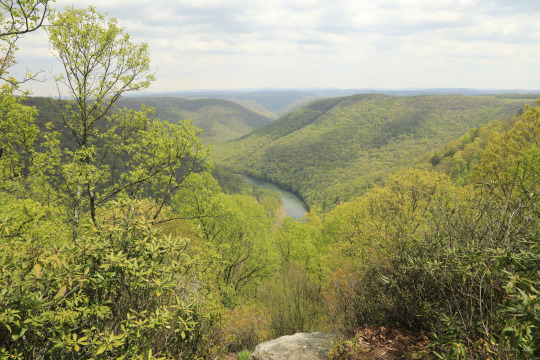
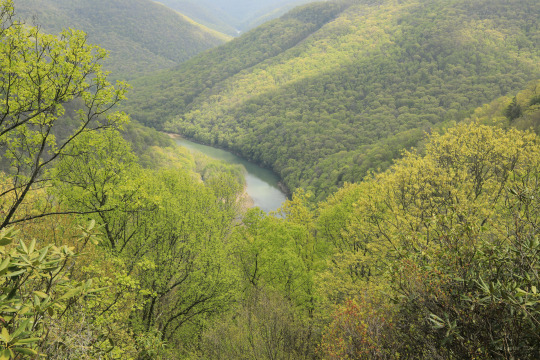
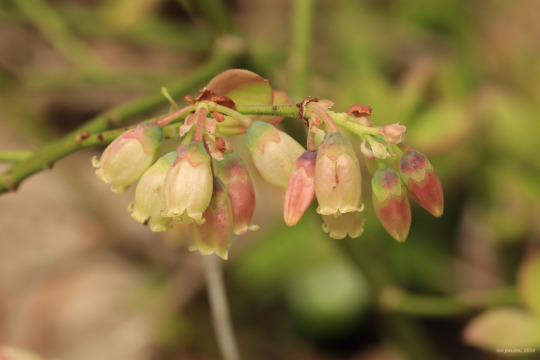


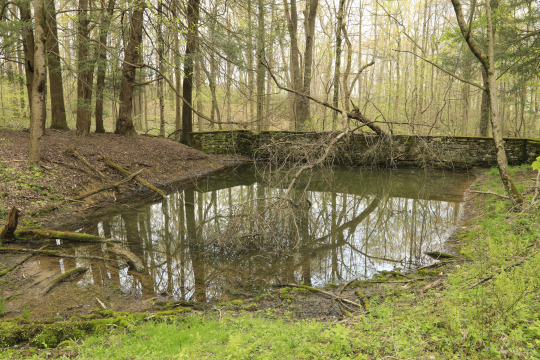
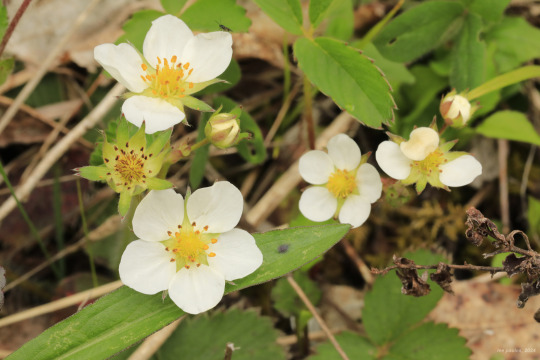
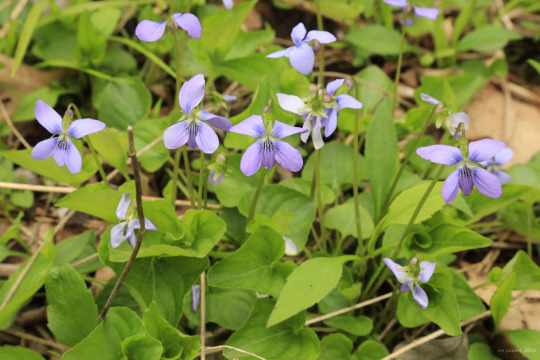

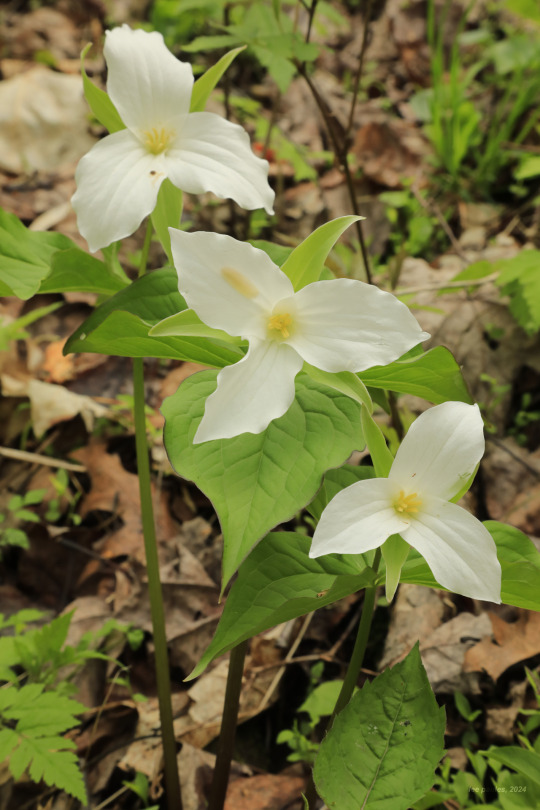
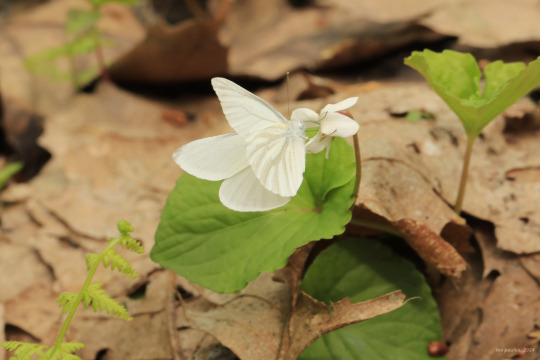
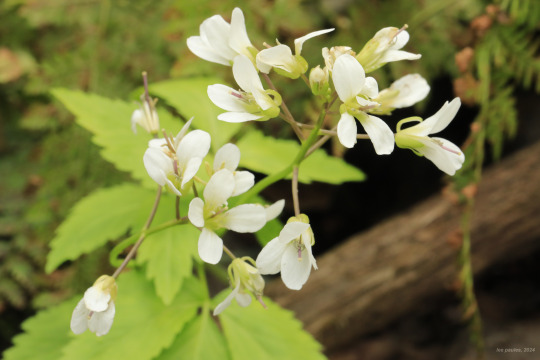
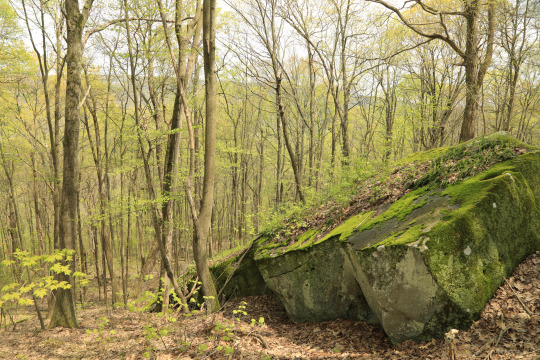
Spring in the Cheat River Canyon.
From top: lowbush blueberry (Vaccinium pallidum); the pendulous green flowers of striped maple (Acer pensylvanicum); sweet white violet (Viola blanda), which loves cool, moist forests; wild strawberry (Fragaria virginiana), which has been hybridized with a South American species to produce commercial strawberries; marsh blue violet (Viola cucullata), an elegant, gregarious violet found growing in seeps and along streambanks; smooth Solomon's seal (Polygonatum biflorum); great white trillium (Trillium grandiflorum); a West Virginia white (Pieris virginiensis) sipping nectar from a sweet white violet; and broadleaf toothwort (Cardamine diphylla), the larval host plant for the West Virginia white.
Note: this hauntingly beautiful butterfly, a flitting ghost in Appalachia's April forests, is in serious decline because it confuses invasive garlic mustard for its host plant, Cardamine. Garlic mustard is toxic to its larvae. Another example of how an invasive species can wreak havoc on the vital lifecycles of our native ecosystems.
#appalachia#vandalia#west virginia#wildflowers#flora#spring#cheat river#cheat river canyon#snake hill wildlife management area#lepidoptera#butterfly#west virginia white#lowbush blueberry#striped maple#sweet white violet#marsh blue violet#smooth solomon's seal#great white trillium#broadleaf toothwort#crinkleroot#two-leaved toothwort
259 notes
·
View notes
Text

In case anyone was wondering what happens if you forget a plug tray of wild strawberries (Fragaria virginiana) in a greenhouse for four months.
9 notes
·
View notes
Text
Summer & Strawberries
There are many things that come to mind when the word “summer” is said for everyone. It may be cookouts with family, days at the pool-side with friends, or not having to go to school for several glorious weeks. There are also the holidays that mark the beginning, middle, and end of Summer which are normally themes in red, white, and blue. So, how many people think of strawberries?
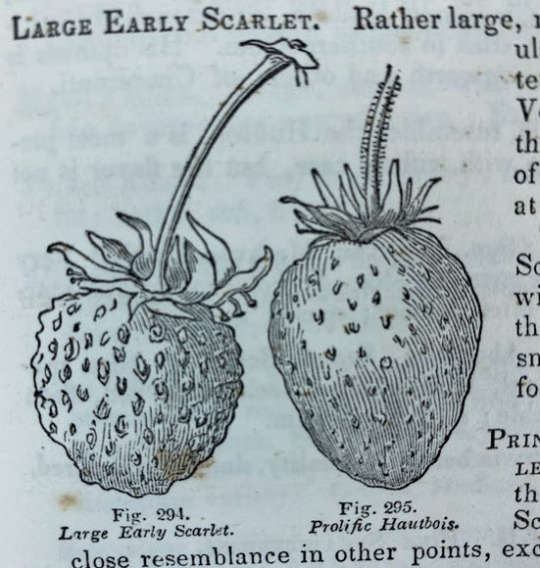
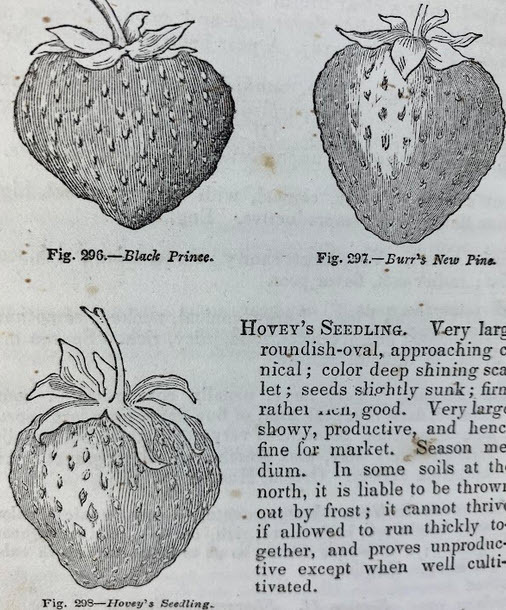
There is a select day especially for picking strawberries and it is May 20th, which is also Armed Forces Day. However, we recognize our nation's service personnel at a later date. Today we are discussing a little hybrid species of fruit. Strawberries first came into existence in the late 18th century in Brittany, France. At least the common garden strawberry did, there is also a wild species of strawberries. The fruit we use in our pound cake was cultivated from breeding the Virginia strawberry or mountain strawberry (Fragaria virginiana) from eastern North America and the Chilean strawberry or beach strawberry (Fragaria chiloensis). When the Spanish first observed the growth of the female Chilean strawberry in 1551, they brought it over to Europe where it flourished but did not produce fruit. It was not until the mid-18th century that when the Chilean variety was planted between rows of musk and mountain strawberries that it produced an abundance of large fruit. This resulted in a series of scientific discoveries regarding plant-breeding methods. The resulting strawberry, Fragaria ananassa, was named by Antoine Nicolas Duchesne due to its similarity to the pineapple with the larger strawberries’ shape, smell, and taste.

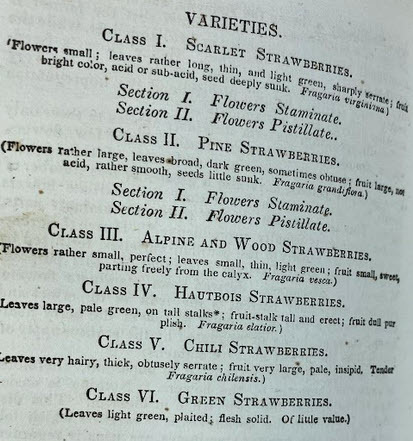
For this litter post, two books were chosen which deal with the growth of the ruby fruit. The oldest of the two is from 1934 and contains a chapter regarding the strawberry; The new American gardener; containing practical directions on the culture of fruits … by Thomas Fessenden (https://bit.ly/437S6IU). The second text is from 1850 and has illustrations of strawberries, which are dispersed throughout this post. The American Fruit Culturist … by John J. Thomas (https://bit.ly/3WsspR7) contains various descriptions and illustrations regarding fruit trees grown in planet nurseries, orchards, and gardens.
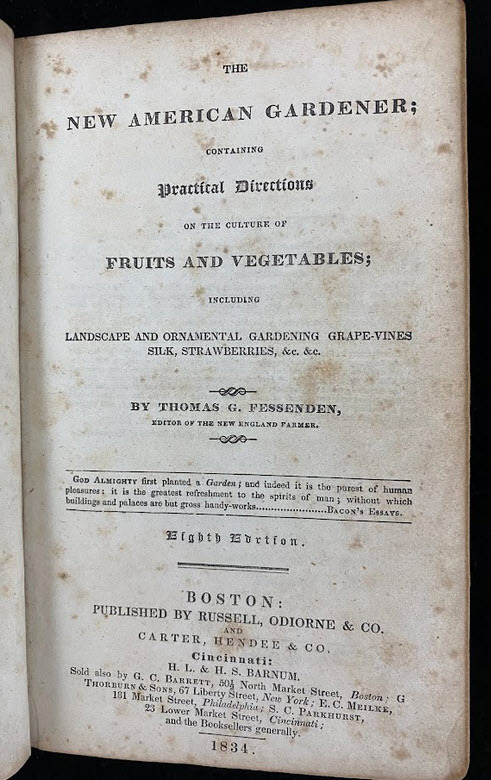

53 notes
·
View notes
Text




Pennsylvania blackberry (Rubus pensilvanicus)
Black Cherry (Prunis Serotina)
Virginia Strawberry(Fragaria virginiana)
Red Elderberry (Sambucus Racemosa)
I wanted to stick these 4 together because May here in zone 4 is the time in which an abundance of berries start to bloom.
These 4 all have a unique place in a landscape and one could make berry forest incorporating each of these together.
Black Cherry (Prunis Serotina) is tree that has the potential to grow 80 feet tall and can live 150-200 years. This tree is 2nd to the oak tree when it comes to hosting pollinators. While the cherries are kind of tart, birds such as Eastern Bluebirds and Cedar Waxwing flock to these berries and love gifts that this tree provides. The flowers on this tree looks like a gathering of white spires or spheres and is an amazing source of early nectar for bumble bees, mining bees, and sweat bees.
Red Elderberry (Sambucus Racemosa) can grow right underneath the Black Cherry tree with a max height of 20 feet. . This plant is notable for its vibrant red berries, lacy foliage, and ecological value. This plant acts as a tree like shrub, and will probably be the earliest of the 4 to bloom. The fruits are reportedly safe to eat when cooked, but are potentially poisonous when raw. Cooked berries can be made into jams, jellies, or syrups. Along with bees, this plant is great for attracting butterflies and hummingbirds.
Pennsylvania blackberry (Rubus pensilvanicus) is also known as the Eastern Blackberry. This one would be a great plant to place underneath the Red Elderberry as it gets wide, but doesn't necessarily get tall. Black, aggregate fruits that ripen in summer, comprising tiny drupelets. They are sweet and juicy, often used in culinary applications. Out of all plants listed in this post, this one probably is my favorite. The dense thickets provide shelter for small mammals and birds. Birds, such as thrushes and catbirds, and mammals, including foxes and raccoons, feed on the berries if you leave them on the plant.
Virginia Strawberry(Fragaria virginiana)
Also known as wild strawberry, It is the ancestor of the cultivated garden strawberry (Fragaria × ananassa) and is cherished for its sweet, aromatic fruits and ecological contributions, though smaller than the kind you'd typically find in the grocery store. Tiny, red, conical berries that are sweet and fragrant, ripening in late spring or early summer. The seeds are visible on the surface of the fruit.
The Virginia strawberry is a keystone species in native plant gardens, providing critical resources for early-season pollinators. Its flowers offer a reliable nectar and pollen source, while its low-growing habit creates a microhabitat for beneficial insects.
---
When grown together, the Red Cherry Tree, Red Elderberry, Virginia Strawberry, and Pennsylvania Blackberry create a harmonious environment. These plants grown together mimic a natural forest ecosystem, enhancing biodiversity, improving soil health, and supporting pollinators and wildlife while producing a variety of fruits for human enjoyment.
3 notes
·
View notes
Note
plant meanings!!!! ramble about em!!!!!! I wanna hear it!!!!
he he :3
plants! technically spoilers for the fic i just posted the vine that ate the south, so like, yknow. under the cut!
alright so! i spent. do not even want to know how long to come up with all of these. from the start i knew leafpool was gonna be kudzu and since (as probably is obvious from the title) the idea of kudzu growing over and smothering everything is strongly associated with the american south, the clans are vaguely set there! somewhere in the georgia-alabama area idk. so all my plants. should grow there lol.
and now to copy paste my notes! anything added i'll put in (parenthesis) at the end.
Leafpool: Kudzu (Pueraria montana), smothering imagery—she is smothered and left to die by starclan.
Squirrelflight: The wild strawberry (Fragaria virginiana). There is something to this idea of always being this provider, and how that is taken from her, ex. how this is one of the parents of the cultivated strawberry. Also straw is similar to star <3. (i'll add--literally i just liked the vibes of this also, i tried finding something else but just kept coming back squilf being a strawberry <3)
Mothwing: While she doesn’t actually have a daemon, to hide that she weaves long-spurred violets (Viola rostrata) into her fur, because violets are lesbian flowers and also because they tend to grow near eastern hemlock trees…so, connecting her to Leafpool! (ie. to the forest, aka where leaf is from) Before her brother’s death, however, she wore aconite (Aconitum lycoctonum,)the specific species of which is non-native but grown in gardens in the Americas, and less toxic than some other varieties, so she gets the benefits of not being doubted (who would wear actual toxin in their fur) without like. dying lol.
Hollyleaf: Wood Lily (Lilium philadelphicum) as they’re poisonous to cats and thus get that association, but also in looks you could see them as a star—but not an aster species. She’s the odd one out.
Jayfeather: Georgia aster (Symphyotrichum georgianum). It’s a rather rare species that used to be far more common as it depends on wildfire-made environments and thus occupies a far smaller range than it once did, like how Jay is sort of hemmed in and stuck by the clan system lol.
Lionblaze: Calico aster (Symphyotrichum lateriflorum). It’s a pretty common aster species with a wide range and it grows in tandem with other aster species—I write Lion as a pretty family-oriented guy so it fits.
and though she was cut from the fic dovewing would have both kudzu (to connect her w/ leaf, and very much show how starclan is now forcing dove to the prophecy and basically stuff i wrote in flightless dove) and Aster quitensis, which is a rare and maybe extinct aster species that is only found in ecuador. my notes here just say "she is not getting out of this alive" so take that as you will.
and for the minor characters who i gave plants...
Cinderpelt: Woodland Sunflower (Helianthus divaricatus) just. Because I feel like it fits her okay. cheerful despite her circumstances, happy to be here, taking it one day at a time.
Brambleclaw: Carolina Rose (Rosa carolina) because. C’mon. The thorns. The association with love. He’s toxic as get out. The story isn’t about that but it COULD BE. (brambleclaw was going to play a larger role but the fic turned way deeper into leaf being the mother of hollyjaylion than i thought it would be so he mostly got cut.)
Firestar: Southern Live Oak (Quercus virginiana), because it's a large tree that works with Thunderclan being The Forest, and also they're like, almost evergreen--they keep their leaves year-round mostly and Thunderclan would like that!
annnnnd that's my plants! wahoo!
8 notes
·
View notes
Text
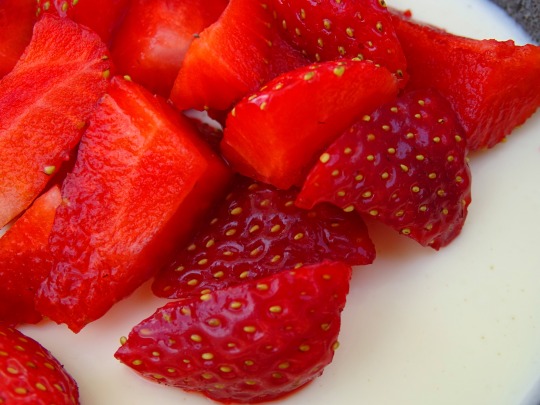
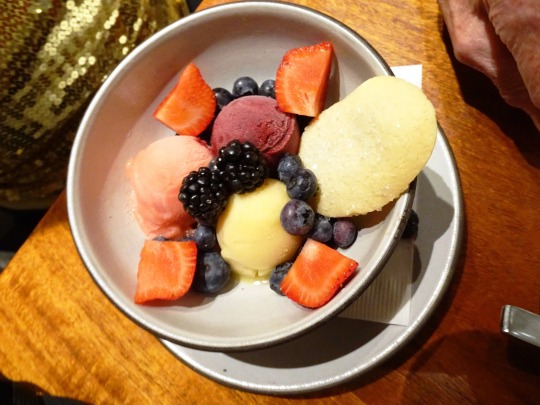

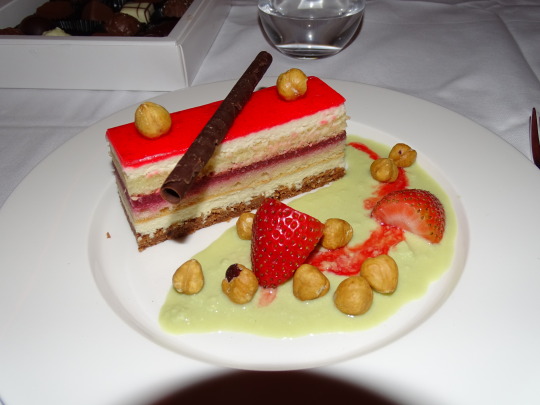
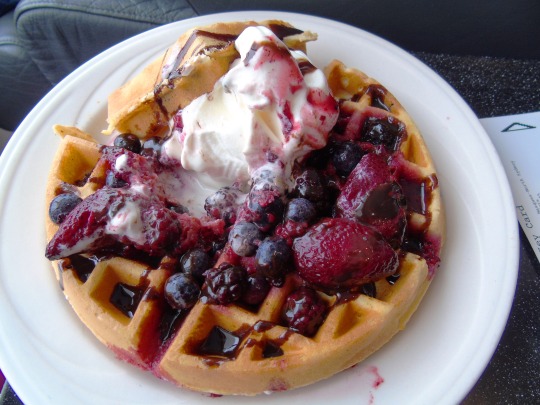
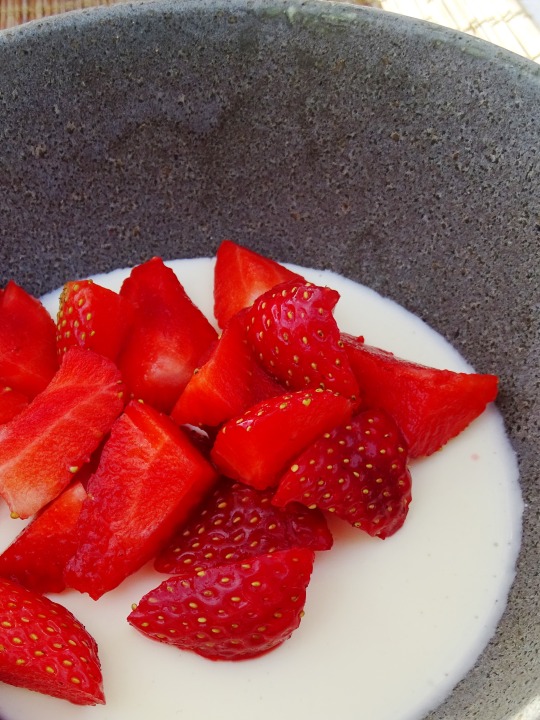
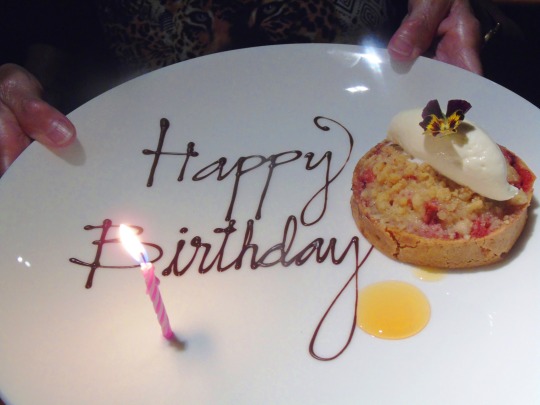
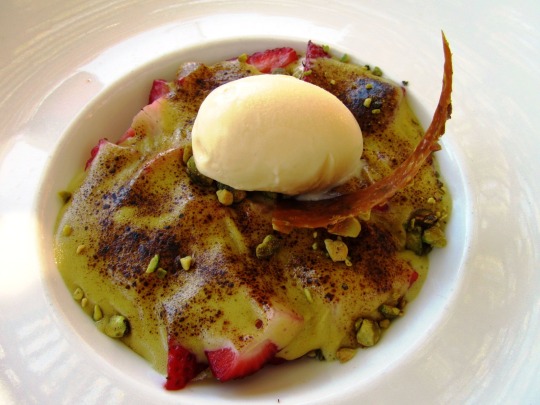
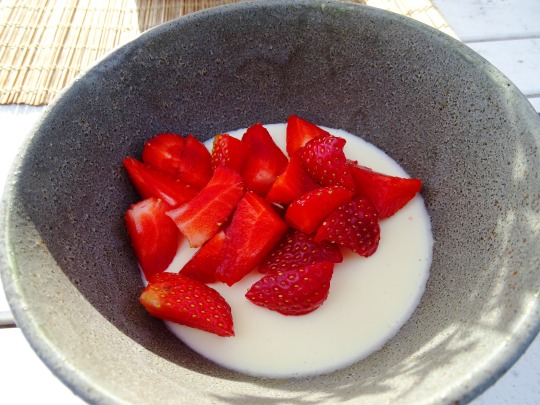
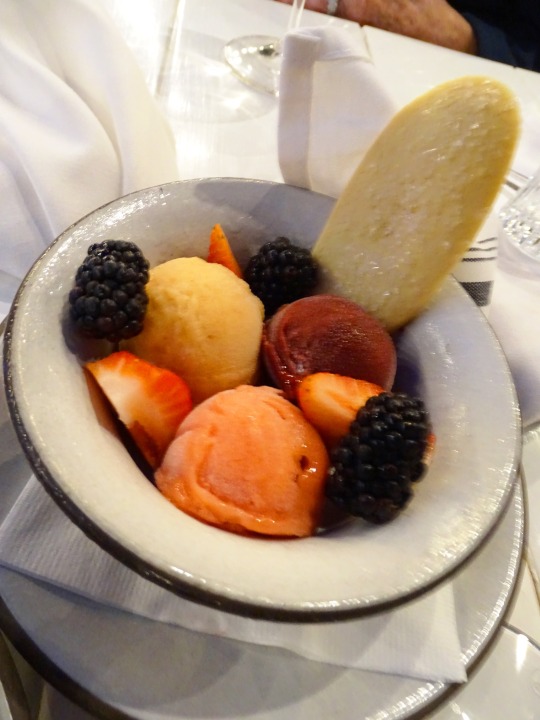
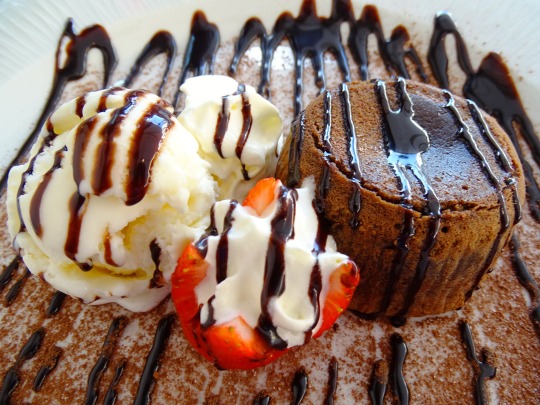
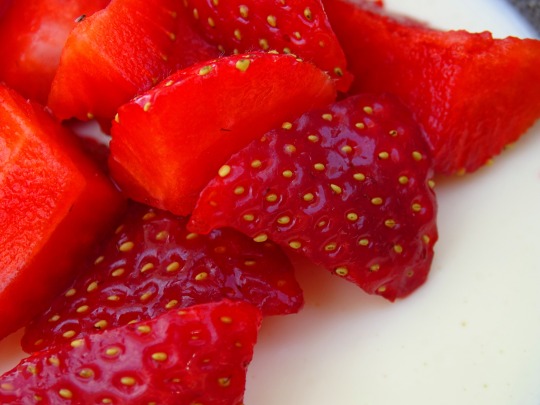
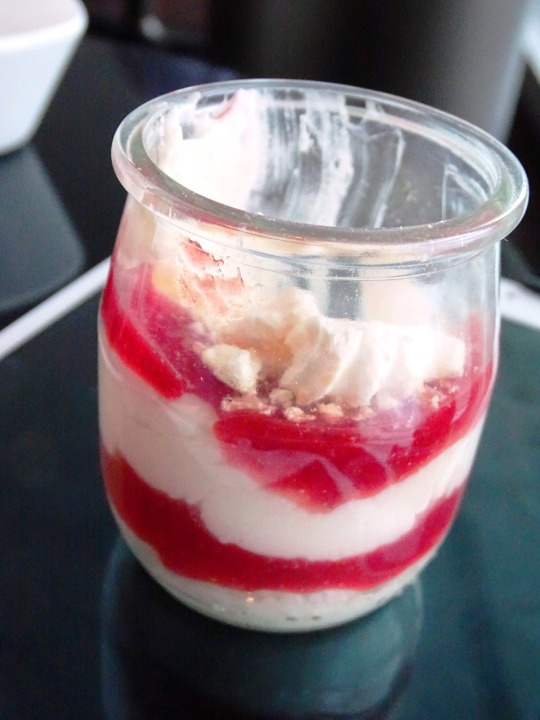
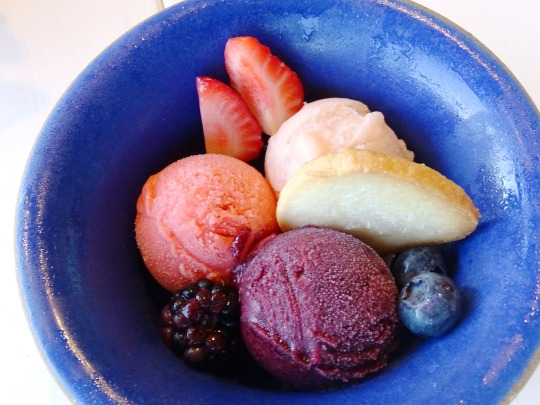

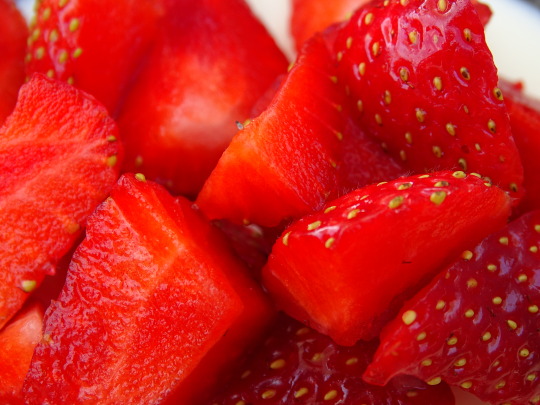
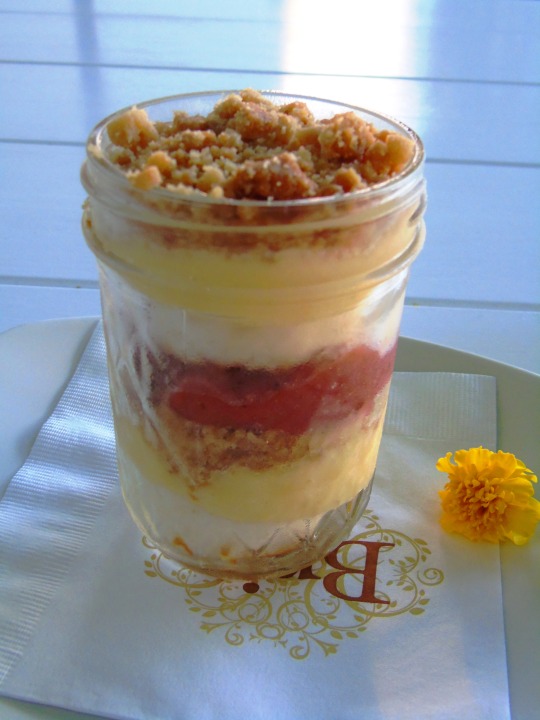
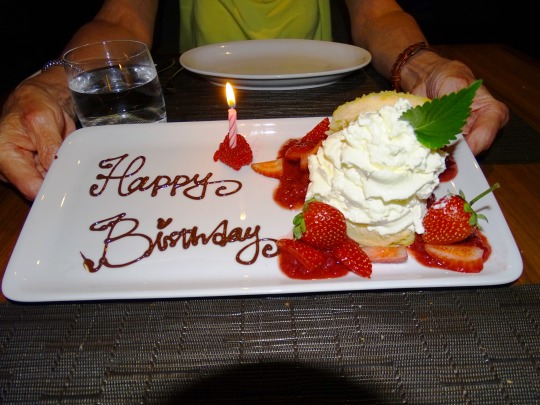
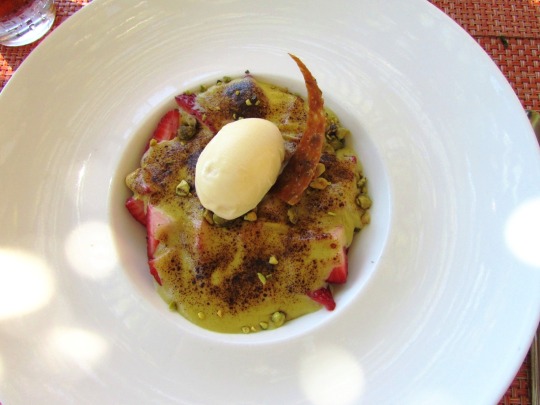
National California Strawberry Day
National California Strawberry Day falls on March 21 and you bet it’s the perfect holiday for nutrition lovers to bask in the fruity deliciousness of one of the world’s favorite fruits — strawberries! A whole day dedicated to strawberries? Why not? Not only does this yummy heart-shaped fruit warm countless hearts and delight bellies, but it’s also packed with goodness benefiting our heart, skin, brain, and much more. National California Strawberry Day was birthed in 1983 by the California Strawberry Advisory Board (now California Strawberry Commission) in celebration of strawberries, which can be enjoyed in a variety of recipes.
History of National California Strawberry Day
We all know strawberries rank among the world’s preferred fruits right now but did you know the existence of strawberries can be traced back centuries? According to popular belief, there are traces of strawberry plants in ancient Rome in 234 B.C., their use then was medicinal — they were used to treat depression, fever, kidney stones, and sore throats. By the 14th century B.C., the tiny rare fruit was cultivated in France. In America, the Europeans first discovered strawberries in 1588. However, the variants of strawberries enjoyed today differ from the earlier ones. In 1712, native strawberries landed in France from Chile they were crossed with European strawberries, and the result was the delicious, large berries enjoyed today.
The small bright, juicy, red strawberry, scientific name — Fragaria ananassa, rumored to be berries just like blackberries and raspberries aren’t really in the botanical sense of the word as they are derived from a single flower with more than one ovary, as compared to true berries from one flower and an ovary with several seeds. Examples of true berries are blueberries, gooseberries, cranberries, grapes, tomatoes, bananas, and peppers.
Strawberries are reputed to deliver a world of goodness: Wade off cancer, boost immunity, boost eye, and brain health, and reduce the risk of cardiovascular disease and stroke, among numerous benefits are loaded with vitamins, fiber, and antioxidants. Plus, strawberries seat comfortably as a low-calorie food too which helps with weight loss. Strawberries are also a highlight as they are dubbed as one of spring’s first fruits.
National California Strawberry Day timeline
234 B.C. Strawberries are First Found in Rome
The strawberry plant is first found in ancient Rome but is used for medicinal purposes.
1588 Europeans First Discover Strawberries
In America, the Fragaria virginiana, a species of strawberry native to North America, is found.
1712 Much Loved Strawberry Hybrid
Owing to a French excursion to Chile, the widely grown garden strawberry is born.
19th Century Strawberry Love Widespread
Fresh strawberries become a luxury, being served with cream, and champagne, among other delicacies.
National California Strawberry Day FAQs
How old is the oldest strawberry?
The royal sovereign dates back to 1892 and is one of the oldest varieties of strawberries that still delights households to date.
What is the sweetest variant of strawberry?
The Alpine Strawberry, also known as the wild strawberry, is small, and super sweet with a distinct flavor; it is easy to cultivate too. Such a delight.
What’s a fun fact about strawberries?
Strawberries belong to the rose family. It’s little wonder they smell just as nice too.
National California Strawberry Day Activities
Learn a new recipe
Enjoy a strawberry treat
Pick your strawberry
Strawberries come in about 600 varieties and can be enjoyed in plenty of ways; you could try the easy strawberry milkshake, perfect for any time of the day. All you need is frozen strawberries, milk, strawberry ice cream, whipped cream, and of course, strawberries.
There are lots and lots of options out there; strawberry sweets, strawberry ice cream, strawberry cakes, chocolate-covered strawberries, and strawberry shortbread cookies. Let your heart guide you!
The sunny weather brings the perfect opportunity to be outdoors picking your summer fruits — strawberries. Quick tip, mornings are best to pick and don’t forget to give yourself a treat once done.
5 Awesome Facts About Strawberries
The first fruits to ripen in spring
Strawberries are a terrific aphrodisiac
Strawberries were a symbol of love
Strawberries stand out
California is a major producer
Strawberries and honeyberries are known as the first fruits to ripen with the welcome of spring.
Just like chocolate, strawberries are known to boost mood, increase libido, and heighten pleasure.
In ancient Rome, strawberries were regarded as the symbol of Venus, the goddess of love.
Strawberries are the only fruit with seeds on the outside and that disqualifies them as berries.
California produces more than 80% of strawberries consumed in North America.
Why We Love National California Strawberry Day
Strawberries are super delicious
It’s the perfect healthy snack
Strawberries are symbolic
This nature’s delight is yummy and can be eaten in a variety of ways. Indulge in smoothies, puddings, ice cream, cake, breakfast fruits, desserts, or after-dinner snacks, depending on your preference.
Strawberries are low in calories so we don’t have to worry about packing extra pounds while enjoying the treat that provides tons of nutritional benefits. We love this!
The delicious treat has long been associated with purity, love, fertility, and rebirth. Go ahead, gift your loved one some strawberries today!
Source
#Trio of Sorbet#Strawberry Shortbread#strawberries with panna cotta#Sweden#dessert#restaurant#Brix Restaurant & Gardens#Berries&Cream#original photography#vacation#fruit#USA#Canada#travel#21 March#NationalCaliforniaStrawberryDay#whipped cream#national day#ice cream#Yountville#Napa Valley#one of my favorite restaurants#chocolate cake a la mode
4 notes
·
View notes
Text
Currently going through iNaturalist and correcting everyone's strawberry identifiactions. Lots of misidentified fragaria vesca vs. Fragaria virginiana. You gotta look at the leaves!
6 notes
·
View notes
Text

20240710 Isle Royale National Park
Wild Strawberry Fragaria virginiana
0 notes
Text
Happy 2025!
I love lists. Here’s the list of seeds I’m starting and plants I’m adding to the landscape this coming spring. My goal this year is to establish the perennial bones of the garden in the sun and partial sun areas of the property. 2026 will be dedicated to the shade and partial shade side.
Native Seeds
New England Aster- Symphyotrichum novae-angliae
Showy Goldenrod- Solidago speciosa
Sweet Goldenrod- Solidago odora
Spotted Bee Balm- Monarda punctata
Wild Bergamot- Monarda fistulosa
Black-eyed Susan- Rudbeckia hirta
Sweet Black-eyed Susan- Rudbeckia subtomentosa
Sundial Lupine- Lupinus perennis subsp. perennis
Prairie Lily- Lilium philadelphicum
Northern Blazing Star- Liatris scariosa var. nieuwlandii
Downy Wood Mint- Blephilia ciliata
Butterfly Weed- Asclepias tuberosa
Common Milkweed- Asclepias syriaca
Tall Thimbleweed- Anemone virginiana
Anise Hyssop- Agastache foeniculum
Pale Purple Coneflower- Echinacea pallida
Purple Coneflower- Echinacea purpurea
Wild Mint- Mentha arvensis
Sweet Joe Pye Weed- Eutrochium purpureum
Hoary Mountain Mint- Pycnanthemum incanum
Canada Wild Rye- Elymus canadensis
Prairie Brome- Bromus kalmii
Prairie Dropseed- Sporobolus heterolepis
Purple Love Grass- Eragrostis spectabilis
Little Bluestem- Schizachyrium scoparium
Native Perennial Bareroots
Wild Strawberry- Fragaria virginiana
Elderberry- Sambucus canadensis
American Hazelnut- Corylus americana
Beach Plum- Prunus maritima
American Plum- Prunus americana
Native-ish Perennial Plants
High bush Blueberry - Vaccinium corymbosum var. “Patriot” “Blueray” and “Northblue”
King of the North Grape- Vitis spp. (V. riparia × Concord-type)
Plants & Seeds still to buy
Rosa setigera and Sunflowers
#new year#spring 2025#native plants#land stewardship#seed starting#pollinators#my garden#food forest
0 notes
Text
Native Plants I’ve Actually Seen Growing Wild in Southern Ontario
Acer saccharinum (silver maple) --along the sides of highways
Acer saccharum (sugar maple) --GTA ravines
Achillea millefolia (yarrow) --GTA ravines
Allium schoenoprasum (wild chives) --GTA ravines, Ridgetown
Allium tricoccum (ramps) --Niagara region escarpments
Amaranthus retroflexus (redroot amaranth) --fallow areas in the GTA
Ambrosia artemisiifolia (ragweed) --fallow areas in the GTA
Ambrosia trifida (giant ragweed) --parks in the GTA
Amelanchier spp. (saskatoon/serviceberry) --GTA ravines
Arisaema triphyllum (Jack-in-the-pulpit) --GTA ravines
Aronia melanocarpa (black chokeberry) --ravines and parks in the GTA
Asarum canadense (Canada ginger) --GTA ravines
Asclepias syriaca (common milkweed) --fallow areas, ravines, and parks throughout southern Ontario from Windsor to GTA
Asplenium trichomanes (maidenhair spleenwort) --Niagara region escarpments
Betula spp. (birch) --ravines and parks throughout southern Ontario from Windsor to GTA
Bidens spp. (beggar ticks) --GTA ravines
Caulophyllum thalictroides (blue cohosh) --GTA parks
Ceratophyllum demersum (hornwort) --GTA ravines (native in freshwater across the globe anyway)
Circaea lutetiana (enchanter’s nightshade) --fallow areas in the GTA
Commelina spp. (dayflower) --fallow areas in Windsor
Cornus alternifolia (Pagoda dogwood) --GTA wooded areas
Cornus sericea (red osier dogwood) --GTA ravines and in Windsor riverside parks
Crataegus spp. (hawthorn) --GTA ravines and parks
Echinocystis lobata (wild prickly cucumber) --GTA ravines
Elaeagnus commutata (silverberry) --GTA parks and fallow areas
Epilobium ciliatum (fringed willowherb) --fallow areas in the GTA
Equisetum spp. (horsetail/scouring rush) --GTA ravines and fallow areas
Erigeron spp. (fleabane) --GTA parks and fallow areas, Ridgetown
Erythronium americanum (trout lily) --GTA ravines and parks
Eutrochium maculatum (Joe-Pye weed) --GTA parks
Fragaria virginiana (wild strawberry) --fallow areas in the GTA
Geranium maculatum (wild geranium) --Windsor green spaces
Geranium robertianum (herb robert) --Windsor green spaces
Geum aleppicum (yellow avens) --GTA fallow areas
Geum canadense (white avens) --GTA fallow areas
Geum macrophyllum (large-leaved avens) --GTA fallow areas
Gymnocladus dioicus (Kentucky coffee tree) --GTA ravines
Helianthus spp. (sunflower) --GTA fallow areas and parks
Heracleum maximum (cow parsnip) --GTA ravines
Hordeum jubatum (foxtail barley) --GTA fallow areas
Humulus lupulus (hops) --GTA ravines
Hydrophyllum virginianum (Virginia waterleaf) --GTA ravines
Impatiens capensis (jewelweed) --GTA ravines and in Windsor riverside parks
Juglans nigra (black walnut) --GTA ravines
Lactuca canadensis (Canadian lettuce) --GTA fallow areas
Lilium michiganense (Michigan lily) --GTA ravines
Lupinus perennis (sundial lupine) --GTA parks
Maianthemum canadense (Canada mayflower) --GTA ravines
Maianthemum racemosum (starry false solomon’s seal) --GTA ravines and parks
Maianthemum stellatum (starry false solomon’s seal) --GTA ravines
Matteuccia struthiopteris (ostrich fern) --GTA ravines
Monarda fistulosa (wild bergamot) --GTA ravines and parks
Morus rubra (red mulberry) --fallow areas in Windsor, GTA parks
Myosotis laxa (smallflower forget-me-not) --GTA fallow areas
Oenothera biennis (evening primrose) --GTA fallow areas
Onoclea sensibilis (sensitive fern) --GTA ravines
Oxalis stricta (yellow wood sorrel) --fallow areas and ravines throughout southern Ontario from Windsor to GTA
Parietaria pensylvanica (Pennsylvania pellitory) --GTA fallow areas
Parthenocissus quinquefolia (Virginia creeper) --Windsor fallow areas and GTA ravines and parks
Persicaria lapathifolia (curlytop smartweed) --GTA fallow areas
Podophyllum peltatum (mayapple) --GTA ravines and parks
Portulaca oleracea (purslane) --fallow areas throughout southern Ontario from Windsor to GTA (native globally anyway)
Potentilla norvejica monspeliensis (ternate-leaved cinquefoil) --GTA fallow areas
Prunella vulgaris (selfheal) --fallow areas and ravines throughout southern Ontario from Windsor to GTA
Prunus virginiana (chokecherry) --Windsor fallow areas, GTA ravines and parks, Niagara region escarpments
Pteridium aquilinum latiusculum (western bracken fern) --GTA parks
Quercus spp. (oak) --wooded areas throughout southern Ontario from Windsor to GTA
Rhus typhina (staghorn sumac) --parks and fallow areas throughout southern Ontario from Windsor to Collingwood
Ribes spp. (currants) --GTA ravines and parks
Ribes spp. (gooseberries) --GTA ravines
Robinia pseudoacacia (black locust) --GTA ravines and parks
Rosa spp. (roses) --GTA ravines, parks, and fallow areas
Rubus occidentalis (black raspberry) --ravines, parks, and fallow areas in Hamilton and GTA
Rubus odoratus (purple-flowered raspberry) --GTA ravines and parks
Rubus strigosus (American red raspberry) --GTA parks
Rudbeckia hirta (black-eyed susan) --GTA parks
Salix spp. (willow) --GTA ravines
Sambucus canadensis (common elderberry) --Windsor riverside parks, GTA ravines
Sambucus racemosa (red elderberry) --GTA ravines and parks
Smilax spp. (greenbrier) --GTA parks
Solidago canadensis (Canada goldenrod) --parks and fallow areas throughout southern Ontario from Windsor to GTA
Sorbus spp. (mountain ash) --GTA ravines and parks
Streptopus spp. (twistedstalk) --GTA parks
Symphoricarpos spp. (snowberry) --GTA parks
Symphyotrichum ericoides (heath aster) --fallow areas throughout southern Ontario from Windsor to GTA
Symphyotrichum novae-angliae (New England aster) --fallow areas throughout southern Ontario from Windsor to GTA
Symplocarpus foetidus (skunk cabbage) --GTA parks
Tilia spp. (linden) --GTA ravines
Trillium grandiflorum (white trillium) --parks throughout southern Ontario from Windsor to GTA
Tsuga canadensis (eastern hemlock) --GTA parks
Typha latifolia (broad-leaved cattail) --marshes in Essex county and GTA
Urtica gracilis (slender nettle) --GTA ravines
Uvularia spp. (bellwort) --streams in Windsor green spaces
Verbena hastata (blue vervain) --GTA ravines
Viburnum lentago (nannyberry) --GTA parks and Ridgetown ravine
Viburnum trilobum (highbush cranberry) --Ridgetown
Viola sororia (wood violet) --fallow areas and wooded areas throughout southern Ontario from Windsor to GTA
Vitis riparia (riverbank grape) --GTA fallow areas, ravines, and parks
Waldsteinia fragarioides (barren strawberry) --GTA ravines and parks
Xanthium strumarium canadense (Canada cocklebur) --GTA parks and fallow areas
I’ve likely seen many others and just couldn’t identify them, but there are a lot I’ve never seen growing wild. What I’m hoping is that some of the native species I have in my garden will make their way to the nearby ravine. If I get around to it, though, I might just take a walk with some Asclepias incarnata (swamp milkweed) seeds in the fall. They certainly seem to successfully germinate in my garden whether I want them to or not (don’t have space for them to go crazy). Can’t see why they wouldn’t in a natural swamp area.
#text post#long text post#native plants of Ontario#native plants of North America#wild native plants
10 notes
·
View notes
Photo



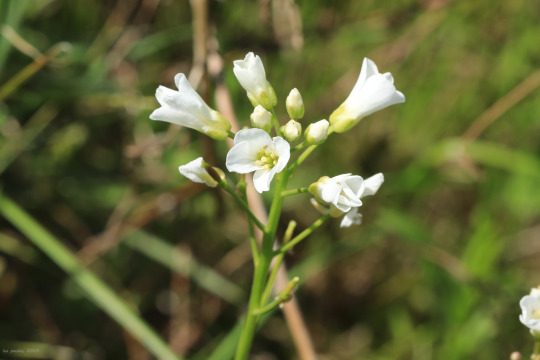

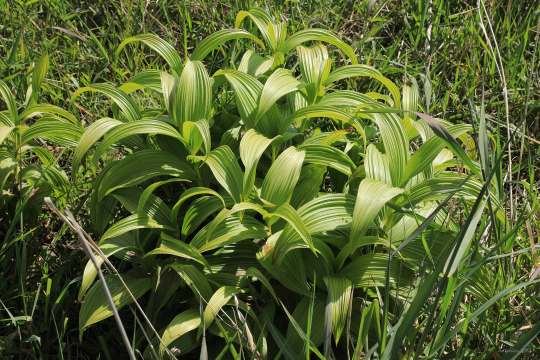
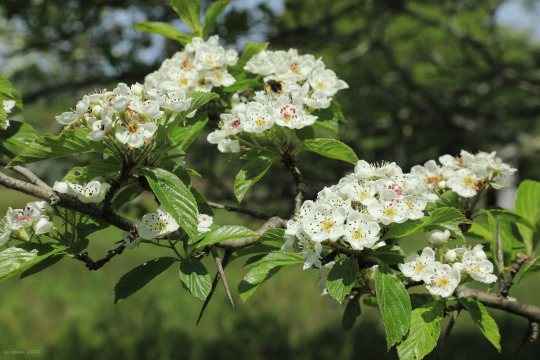
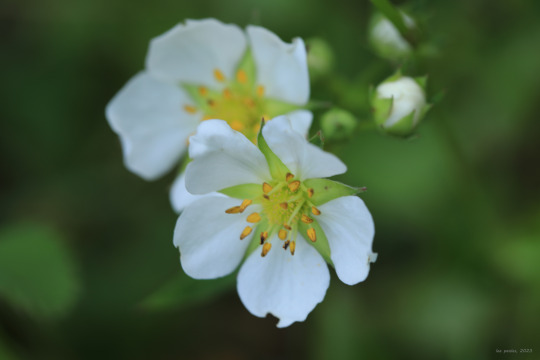
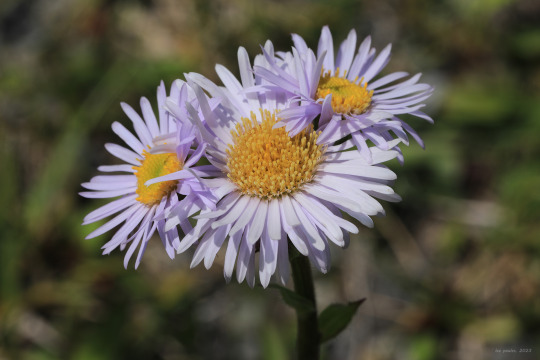
One of the many beaver-engineered wetlands complexes in Canaan Valley. The dam, now over-grown with sedges and cattails, is as impressive a feat of engineering for rodents as the Hoover Dam is for human beings. More to the point, beavers are the key drivers to the ecological well-being of Canaan Valley’s extensive wetlands, and for the most part, staff at the National Wildlife Refuge and Canaan Valley State Park let them do their thing - to the point of occasionally letting them flood boardwalks and trails.
From top: spring cress (Cardamine bulbosa), a wetlands-loving relative of the toothworts, which is similarly edible; false green hellebore (Veratrum viride), a potentially-deadly mountain beauty, whose alkaloid-laden leaves and roots can cause cardiac arrest if ingested in sufficient amounts; dotted hawthorn (Crataegus punctata), an important food and shelter tree for wildlife in the valley; woodland strawberry (Fragaria vesca L.), distinguished from the similar wild strawberry (Fragaria virginiana) by sepals that point backwards and seeds on the surface of the fruit; and Robin’s plantain (Erigeron pulchellus), the most impressive and beautiful of the spring fleabanes in Central Appalachia.
#appalachia#vandalia#west virginia#allegheny mountains#canaan valley#canaan valley state park#wetlands#beaver pond#spring cress#false green hellebore#corn lily#dotted hawthorn#white haw#woodland strawberry#robin's plantain#flora#wildflowers#may#spring
61 notes
·
View notes
Text
Brunhilde and Bjorn were probably eating eggs, probably even the eggs of the junglefowl of south east Asia. Those were domesticated to become domestic hens around 3500 years ago and arrived in Europe around 800BCE. Though B&B probably didn't get their hands on them until about the third century AD, when hens finally made it to the northern and whiter areas of Europe. They might be eating other, smaller, eggs though: pigeon or gull eggs.
(But even in SE Asia, people probably weren't eating hen eggs that size, because hens have been bred intensively to produce bigger eggs in the last 100-odd years, which is why old recipes tend to come out a bit overegged if you make them with huge modern eggs. )
The avocado is older than the hen, being domesticated around 5000 years ago, but of course, breakfasts with avocado and hen eggs had to wait for the Columbian Exchange, since the avocado is a New World fruit.
Cheese is probably the oldest food on the platter, but only in Europe, India and the Middle East.
The real newcomer is the strawberry. Nobody was eating big juicy garden strawberries like those till after the 1750's when the garden strawberry was first bred in France, by crossing Fragaria virginiana from eastern North America and Fragaria chiloensis from Chile.
So with the addition of the garden strawberry, this becomes a meal that nobody's ancestors were eating until pretty recently.
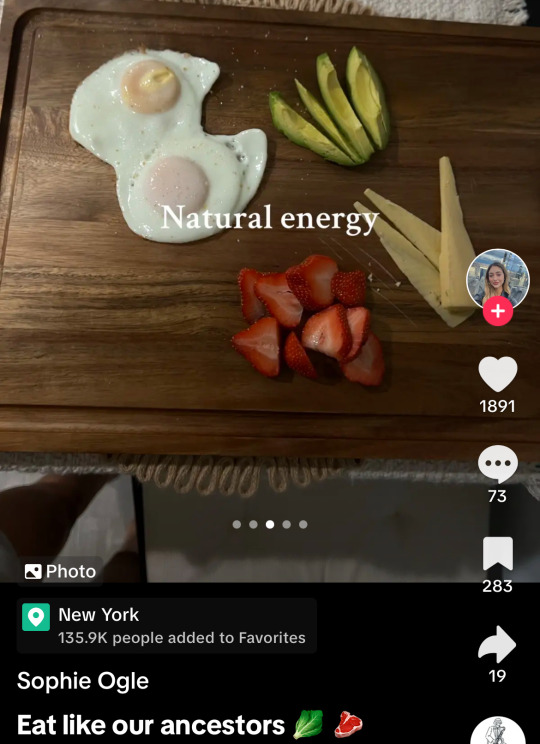
this meal would piss me off
#food#ramblings#so many foods are new!#It's strange to think what Bjorn & Brunhilde#or yvain and guinhumara#or cassius and flavia#were eating when so many things we think of as staples were not available to them.
7K notes
·
View notes
Text

By the 1300's the strawberry was in cultivation in Europe, when the French began transplanting the wood strawberry (Fragaria vesca) from the wilderness to the garden. At the end of the 1500's the musky strawberry (Fragaria moschata) was also being cultivated in European gardens. Then, in the 1600’s, the Virginia strawberry (Fragaria virginiana) of North America reached Europe. The spread of this new relatively hardy species was very gradual and it remained little appreciated until the end of the 1700’s and early 1800's when it was popular in England.
- Vern Grubinger
0 notes
Text

We’ve got some berry good news to share as we’re firmly ensconced in berry season right now! Our farmers markets are awash in vibrant jewel tones from deep purples to grenadine reds as endless trays of juicy, ripe berries take center stage in farmstall displays over the next few weeks. These delicious, bite-sized beauties pack a powerful punch of superfood goodness in each little nugget, so let’s revel in peak berry season while it lasts. Strawberries While the exact origins of strawberry plants are scientifically unknown, they're thought to be indigenous to North and South America as well as Europe and Asia. Fragaria virginiana, a perennial species of strawberry plant native to eastern North America, was especially important to American Indians in this region who relished its fruit in their diet long before European settlers arrived. In fact, June was known to many tribes as the “Strawberry Moon”, as it was the month when most wild strawberries would begin to ripen. While the strawberries you find in the farmers market are a cultivated version of these OG berries, they will taste delectable in this Strawberry Spoon Bread recipe made with fresh fruit and cornmeal in a nod to its Native American heritage: Ingredients
2 pints fresh farmers market strawberries, hulled and quartered
3 cups Goodness Dairy whole milk, divided
3 tablespoons SOVA Farms butter
3 large Great Joy Family Farm, SOVA Farms or Stone & Thistle Farm eggs, beaten
2 tablespoons Newgate Farms honey
2 cups Goodness Dairy heavy whipping cream
1 cup Great Joy Family Farm cornmeal
3/4 cup granulated sugar, divided
1 tablespoon baking powder
1 teaspoon salt
Raspberries Following hot on the heels of their carmine cousin, raspberries make an entrance into the farmers market by mid-late June. The American red raspberry is indigenous to North America and was utilized by native tribes who often dried the berries for preservation and ease of transportation. European settlers brought their own native species of raspberries with them to the colonies and began to cultivate and breed them. Today, most commercially grown red raspberries in North America have ancestry from both the European (Rubus idaeus) and North American (Rubus strigosus) populations. Raspberries are an excellent source of fiber and vitamin C, making them a smart snack at any time of day. This easy-to-make, low-sugar Raspberry Coulis will add the wow factor to a bowl of Goodness Dairy vanilla ice cream or Willow Pond Sheep Farm yogurt and will transform pancakes, waffles, oatmeal and more from ordinary to extraordinary. Cherries While they’re botanically considered a drupe or stone fruit rather than a berry, baskets of sweet cherries can be found cozying up to rows of colorful berries in the farmers market by mid-June. Like strawberries, cherries stop ripening the moment they’re harvested, so it’s best to store them in the fridge where they will stay fresh for up to a week. The most common type of sweet cherry grown in this region is the Bing, which tends to be a dark, mahogany red that’s almost black in tone when fully ripe. Cherries freeze well in airtight plastic bags -- with or without pits -- which means you can extend the benefits of cherry season well beyond its expiration. Blueberries As we move across the seasonal color spectrum from reds to blues, aptly named blueberries are typically ready to harvest by late June. Both wild and cultivated commercial blueberries are all native to North America. Species with small, pea-size fruit growing on low-level bushes are known as "lowbush blueberries" (synonymous with "wild"), while cultivated plants with larger berries growing on taller bushes are known as "highbush blueberries". Blueberries are one of the richest sources of antioxidants, including vitamins A and C, and flavonoids like quercetin and anthocyanidin, making them a nutritional superfood. The silvery sheen (or “bloom”) found on the skin of blueberries is a naturally occurring compound that helps protect the fruit, which is why you should only wash blueberries right before you’re going to eat them. As we celebrate the riot of fresh fruit and colorful produce currently making a flamboyant splash at the farm stands, we wish you a very merry berry and cherry season and look forward to seeing you in the farmers market this weekend.
#downtoearthmkts#farmersmarket#eatlocal#shoplocal#buylocal#farmersmarkets#eatdowntoearth#localfood#berries#berryseason
1 note
·
View note